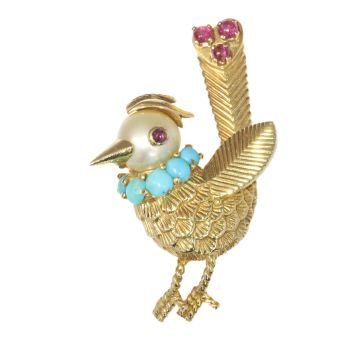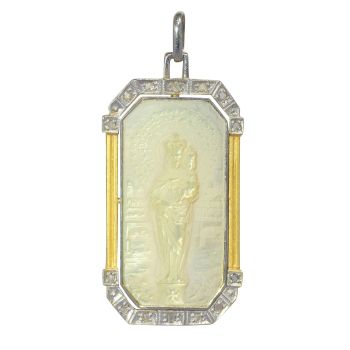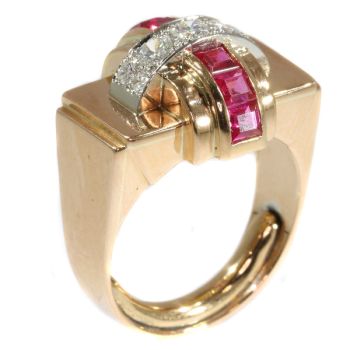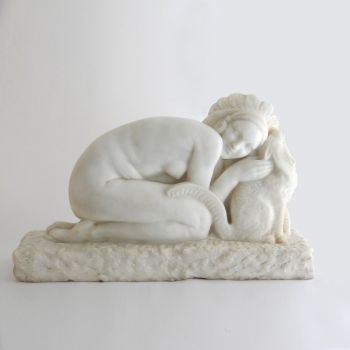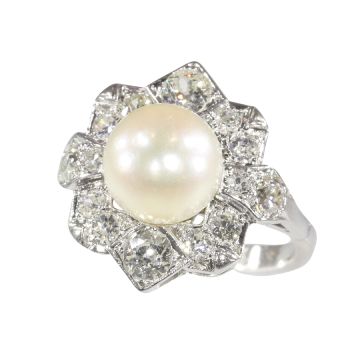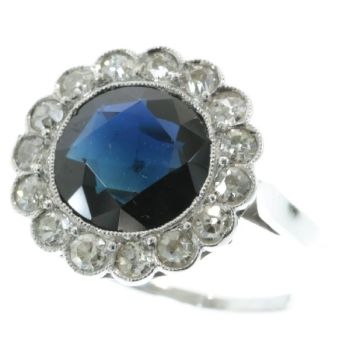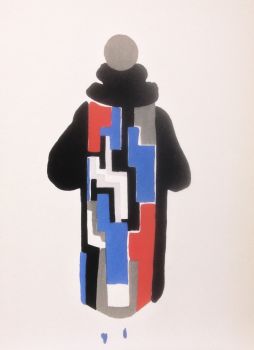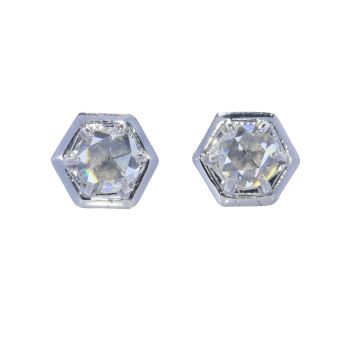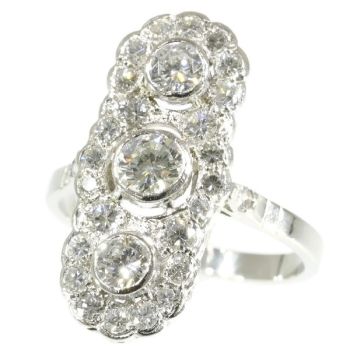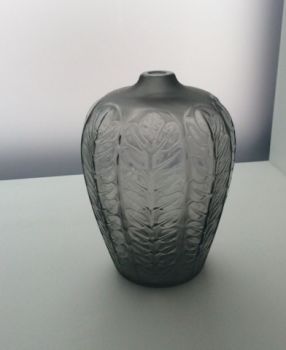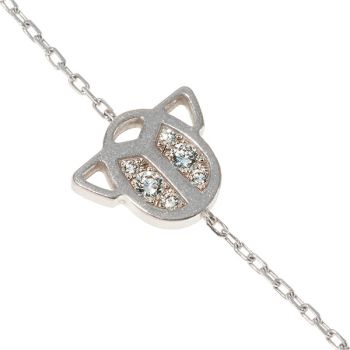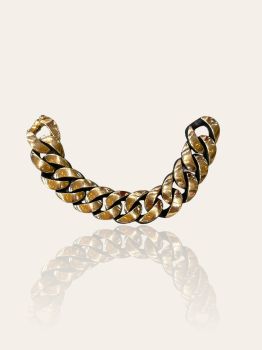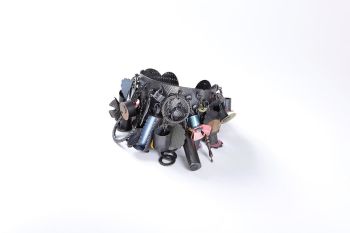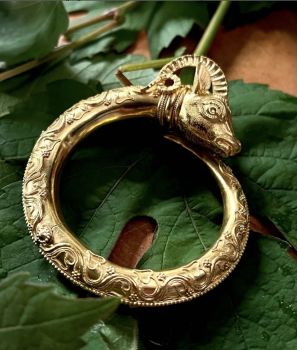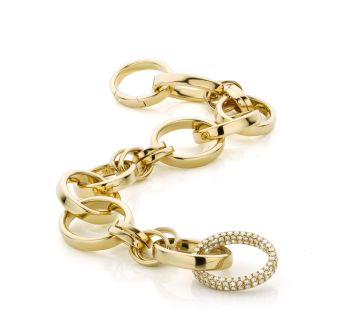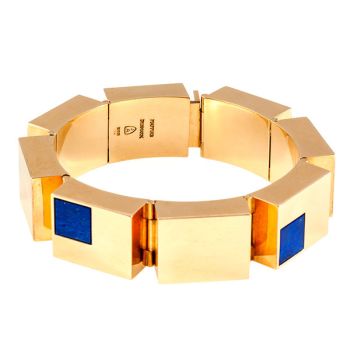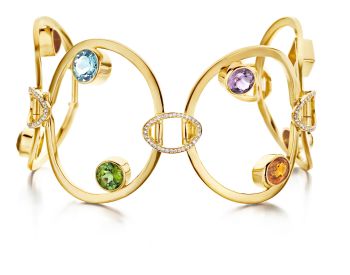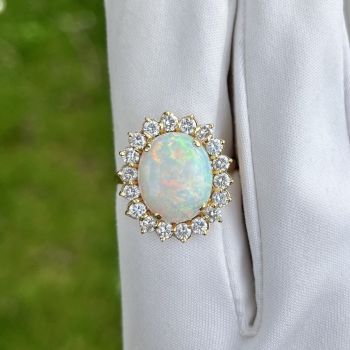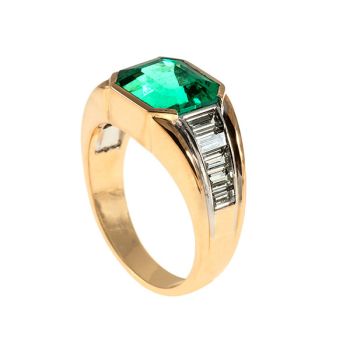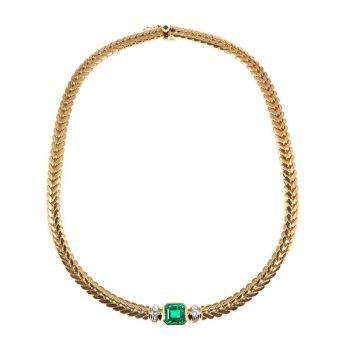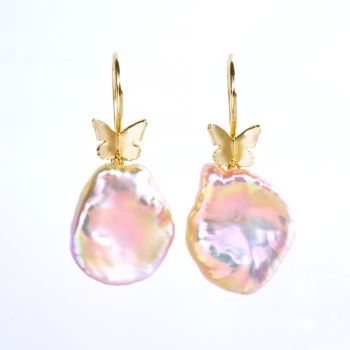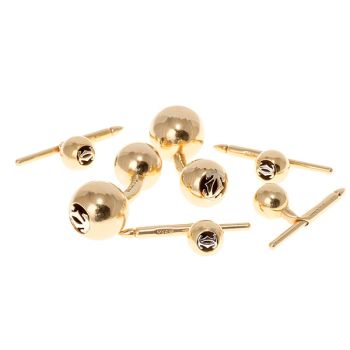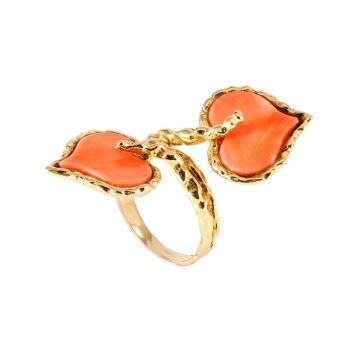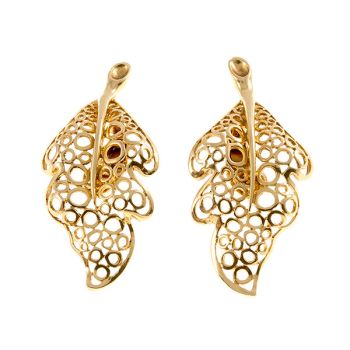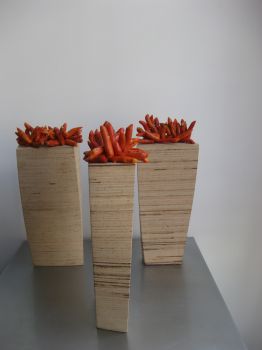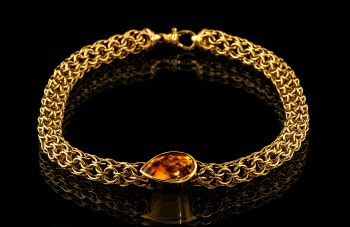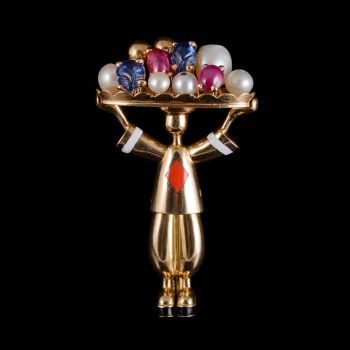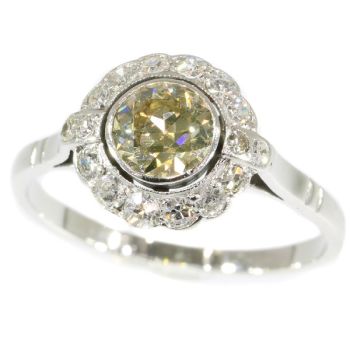Bracciale Art Déco con perline di corallo smaltato, 4 fili 1920
Artista Sconosciuto
Giallo oroCoralloOroCorallo rosso
€ 8.500
Adin Fine Antique Jewellery
- A proposito di opere d'arteArt Deco enameled coral beaded bracelet, 4 strands.
This Art Deco bracelet ascends from customary antique jewellery to the level of applied arts due to its rare combination in craftsmanship of goldsmithed 18K yellow gold, of delicately engraved coral beads and of a black enamelled finish. Four coralstrands guide you to a Japanese garden with a central round coral bead with tulip engravings, which disguise the jewel's closure. Two engraved columns followed by black enamelled convex portals guard this gem. Being a strong representative of Japonism in the 1920's, this bracelet is eagerly waiting to serve its next Geisha.
Antique jewelry object group: flexible bracelets/bangles
Country of origin: Although it does not carry any legible control marks we believe this to be of French or Belgian origin.
Style: Art Deco
(more info on styles)
Style specifics: Abstract motives and geometrical forms are quite typical for the Art Deco period.
Period: ca. 1920
(events and facts in 1920)
Source of inspiration: Japan
Theme: Japanese style engravings in the coral
Material: 18K white gold
(more info on precious metals)
Technique: Enamelling is an old and widely-adopted technology. The ancient Egyptians applied enamels to pottery and stone objects. The ancient Greeks, Celts, Russians, and Chinese also used enameling processes on metal objects. Enamel is the colorful result of fusing powdered glass to a substrate by firing, usually between 750 and 850 degrees Celsius. The powder melts and flows and hardens to a smooth, durable vitreous coating on metal, glass or ceramic. According to some sources, the word enamel comes from the High German word smelzan (to smelt) via the Old French esmail. Used as a noun, "an enamel" is a usually smalldecorative object, coated with enamel coating, such as a champlevé or a cloisonné (different techniques).
Extra information: Japonism, or Japonisme, the original French term, which is also used in English, is a term for the influence of the arts of Japan on those of theWest. The word was first used by Jules Claretie in his book L'Art Francais en 1872 published in that year. Works arising from the direct transfer of principles of Japanese art on Western, especially by French artists, are called japonesque.
Precious stones: coral(more info on precious stones):
- Four coral bead strands with 104 corals in total, diameter approx. 6 mm
- Two engraved coral ornaments measuring approx. 17.7 mm by 10.5 mm
- One round shaped engraved coral (the clasp) with a diameter of approx. 16.6 mm
Hallmarks: No trace.
(more info on hallmarks)
Condition: good condition (one of the white gold dishes that are black enameled has some chips off at the edge)
(more info on our condition scale)
Dimensions: length 20.50 cm (8.07 inch)
Weight: 50.00 gram (32.15 dwt)
Reference Nº: 10015-4360
See also our:
bracelets, art deco jewelry, jewelry with enamel, jewelry with coral, latest acquisitions,
antique jewelry, estate jewelry, vintage jewelry or modern jewelry
Jewelry with birthstones (or month stones) for:
January - February - March - April - May - June - July
August - September - October - November or December.
Additional information:
jewelry glossary - wall of fame - visit us in Antwerp - subscribe to our mailinglist.
What is antique jewelry? - What is estate jewelry? - What is vintage jewelry? - A proposito di opere artista
Può succedere che un artista o un creatore sia sconosciuto.
Alcune opere non sono determinate da chi sono state realizzate o sono state realizzate da (un gruppo di) artigiani. Esempi sono statue dell'antichità, mobili, specchi o firme non chiare o leggibili ma anche alcune opere non sono affatto firmate.
Inoltre puoi trovare la seguente descrizione:
•"Attribuito a …." A loro avviso probabilmente opera dell'artista, almeno in parte
•“Studio di ….” o “Officina di” A loro avviso un'opera eseguita nello studio o nella bottega dell'artista, eventualmente sotto la sua supervisione
•“Cerchio di…” A loro avviso un'opera del periodo dell'artista che mostra la sua influenza, strettamente legata all'artista ma non necessariamente al suo allievo
•"Stile di..." o "Seguace di..." A loro avviso un'opera eseguita nello stile dell'artista ma non necessariamente da un allievo; può essere contemporaneo o quasi contemporaneo
•“Modalità di…” A loro avviso un'opera nello stile dell'artista ma di epoca successiva
•"Dopo …." A loro avviso una copia (di qualsiasi data) di un'opera dell'artista
•“Firmato…”, “Datato…” o “Iscritto” A loro avviso l'opera è stata firmata/datata/inscritta dall'artista. L'aggiunta di un punto interrogativo indica un elemento di dubbio
•"Con firma....", "Con data...", "Con iscrizione..." o “Riporta firma/data/iscrizione” a loro avviso la firma/data/iscrizione è stata aggiunta da qualcuno diverso dall'artista
Sei interessato ad acquistare questa opera d'arte?
Artwork details
Related artworks
- 1 - 4 / 12
- 1 - 4 / 24
Artista Sconosciuto
Braccialetto di diamanti del XVIII secolo con intagli di 2000 anni1790
€ 23.000Adin Fine Antique Jewellery
 A cura di
A cura diDanny Bree
Vincent Cober
Geelgouden armband waarvan 1 schakel bezet met 200 diamanten2022
Prezzo su richiestaVincent Cober
1 - 4 / 24Gyrinus
Verre gravé pointillé avec putti1764 - 1766
Prezzo su richiestaPeter Korf de Gidts - Antiquairs
Artista Sconosciuto
Un rare filigrane un gobelet retortoli1550 - 1600
Prezzo su richiestaPeter Korf de Gidts - Antiquairs
Artista Sconosciuto
Gobelet vénitien ailé1624 - 1626
Prezzo su richiestaPeter Korf de Gidts - Antiquairs
1 - 4 / 24- 1 - 4 / 24
- 1 - 4 / 12









